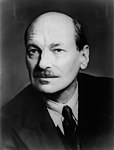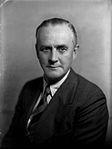
Back যুক্তরাজ্যের সাধারণ নির্বাচন, ১৯৫১ Bengali/Bangla Eleccions al Parlament del Regne Unit de 1951 Catalan Parlamentsvalget i Storbritannien 1951 Danish Britische Unterhauswahl 1951 German Γενικές Εκλογές του Ηνωμένου Βασιλείου 1951 Greek Elecciones generales del Reino Unido de 1951 Spanish Yhdistyneen kuningaskunnan parlamenttivaalit 1951 Finnish Élections générales britanniques de 1951 French הבחירות הכלליות בבריטניה 1951 HE Elezioni generali nel Regno Unito del 1951 Italian
| |||||||||||||||||||||||||||||||||||||||||||||||||
All 625 seats in the House of Commons 313 seats needed for a majority | |||||||||||||||||||||||||||||||||||||||||||||||||
|---|---|---|---|---|---|---|---|---|---|---|---|---|---|---|---|---|---|---|---|---|---|---|---|---|---|---|---|---|---|---|---|---|---|---|---|---|---|---|---|---|---|---|---|---|---|---|---|---|---|
| Opinion polls | |||||||||||||||||||||||||||||||||||||||||||||||||
| Turnout | 82.6% ( | ||||||||||||||||||||||||||||||||||||||||||||||||
| |||||||||||||||||||||||||||||||||||||||||||||||||
 Colours denote the winning party—as shown in § Results | |||||||||||||||||||||||||||||||||||||||||||||||||
 Composition of the House of Commons after the election | |||||||||||||||||||||||||||||||||||||||||||||||||
| |||||||||||||||||||||||||||||||||||||||||||||||||
The 1951 United Kingdom general election was held twenty months after the 1950 general election, which the Labour Party had won with a slim majority of just five seats. The Labour government called a snap election for Thursday 25 October 1951 in the hope of increasing its parliamentary majority.
This election is remarkable for the fact that despite the Labour Party winning the popular vote (48.8%) and achieving the highest-ever total vote (13,948,385) at the time, the Conservative Party won a majority of 17 seats. This unusual phenomenon can be attributed to the collapse of the Liberal vote, which enabled the Conservatives to win seats by default.[1]
The Labour Party has never gone on to equal or surpass the voteshare or the total vote that it acquired in this election.[2] The Conservatives, however, would break the record of the highest votes in 1992 and again in 2019. It would also exceed the 48.8% voteshare won by the Labour Party, in the 1955 and 1959 elections winning over 49% in each case.
The election marked the return of Winston Churchill as Prime Minister and the beginning of Labour's 13-year spell in opposition. It was the third and final general election to be held during the reign of King George VI, as he died the following year on 6 February and was succeeded by his daughter, Elizabeth II. It was the last election in which the Conservatives did better in Scotland than in England.
The 1951 election was the second one to be covered on BBC Television. On election night, the results were televised from the BBC Alexandra Palace studio in London. Graham Hutton, David Butler and H. G. Nicholas headed the election night coverage from 10.15pm to 4.00am on the television service. On the following day, television coverage started at 10.00am and continued throughout the day until 5.00pm.[3]
Cite error: There are <ref group=lower-alpha> tags or {{efn}} templates on this page, but the references will not show without a {{reflist|group=lower-alpha}} template or {{notelist}} template (see the help page).
- ^ Jenkin, Thomas P. (1952). "The British General Election of 1951". The Western Political Quarterly. 5 (1): 51–65. doi:10.2307/442551. ISSN 0043-4078. JSTOR 442551.
- ^ Linton, Martin. "Labour can still win". Fabian Tract (532).
- ^ "The General Election". Radio Times (1458): 50. 19 October 1951.


